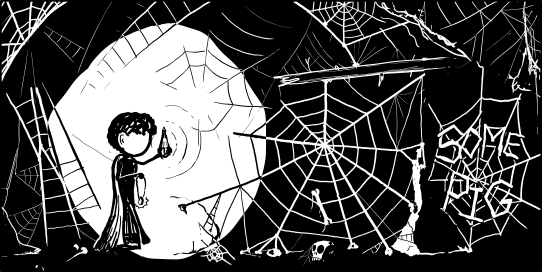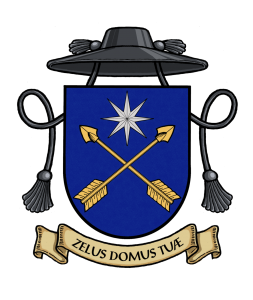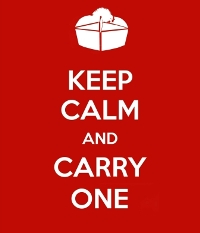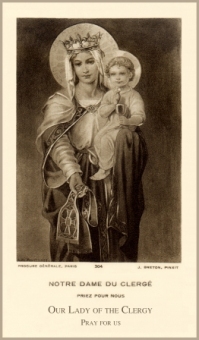Amusing from xkcd:


Comments are closed.


Coat of Arms by D Burkart
St. John Eudes
- Prosper of Aquitaine (+c.455), De gratia Dei et libero arbitrio contra Collatorem 22.61
Nota bene: I do not answer these numbers or this Skype address. You won't get me "live". I check for messages regularly.
![]()
![]()
WDTPRS


020 8133 4535


651-447-6265
“He [Satan] will set up a counter-Church which will be the ape of the Church because, he the devil, is the ape of God. It will have all the notes and characteristics of the Church, but in reverse and emptied of its divine content. It will be a mystical body of the anti-Christ that will in all externals resemble the mystical body of Christ. In desperate need for God, whom he nevertheless refuses to adore, modern man in his loneliness and frustration will hunger more and more for membership in a community that will give him enlargement of purpose, but at the cost of losing himself in some vague collectivity.”
“Who is going to save our Church? Not our bishops, not our priests and religious. It is up to you, the people. You have the minds, the eyes, and the ears to save the Church. Your mission is to see that your priests act like priests, your bishops act like bishops.”
- Fulton Sheen
Therefore, ACTIVATE YOUR CONFIRMATION and get to work!
- C.S. Lewis
PLEASE subscribe via PayPal if it is useful. Zelle and Wise are better, but PayPal is convenient.
A monthly subscription donation means I have steady income I can plan on. I put you my list of benefactors for whom I pray and for whom I often say Holy Mass.
In view of the rapidly changing challenges I now face, I would like to add more $10/month subscribers. Will you please help?
For a one time donation...



"But if, in any layman who is indeed imbued with literature, ignorance of the Latin language, which we can truly call the 'catholic' language, indicates a certain sluggishness in his love toward the Church, how much more fitting it is that each and every cleric should be adequately practiced and skilled in that language!" - Pius XI
"Let us realize that this remark of Cicero (Brutus 37, 140) can be in a certain way referred to [young lay people]: 'It is not so much a matter of distinction to know Latin as it is disgraceful not to know it.'" - St. John Paul II
Grant unto thy Church, we beseech Thee, O merciful God, that She, being gathered together by the Holy Ghost, may be in no wise troubled by attack from her foes. O God, who by sin art offended and by penance pacified, mercifully regard the prayers of Thy people making supplication unto Thee,and turn away the scourges of Thine anger which we deserve for our sins. Almighty and Everlasting God, in whose Hand are the power and the government of every realm: look down upon and help the Christian people that the heathen nations who trust in the fierceness of their own might may be crushed by the power of thine Arm. Through our Lord Jesus Christ, Thy Son, who liveth and reigneth with Thee in the unity of the Holy Ghost, God, world without end. R. Amen.
If you travel internationally, this is a super useful gizmo for your mobile internet data. I use one. If you get one through my link, I get data rewards.






Visits tracked by Statcounter
since Sat., 25 Nov. 2006:
If you say so, Father Z.
Well, actually if you translate the…
…on second thought, any comment I make will make me sound like a bombastic Tolkien fanboy. Not to mention the fact that this is the post I felt compelled to comment on, even with The First Gay President, Nuns on a Bus, the mandate, and Muller’s appointment to the CDF competing for mental real-estate.
Thank you, Fr. Z, for your consistently edifying blog!
Where’s the Savage Chickens been?
Choirmaster: Where’s the Savage Chickens been?
They are still around.
Fr. Z, I know they’re still around, but how will I know which ones are funny if you don’t post them?
And, since there were no other Tolkien-fanboy-takers, I’ll submit my correction to the headline of this post, and expose my petty inclinations: “Cirith Charlotte” would be more correct, as it would signify “Charlotte’s Pass”.
thanks to Google I discovered this much . . . . .
In Tolkien’s manufactured language of Middle Earth, Cirith Ungol translates out as “pass of the spider”. Cirith Ungol is the bleak place where Frodo and Samwise fight the giant spider Shelob in Tolkien’s second installment in the trilogy, The Two Towers.
That’s right, acardnal!
Indeed, “ungol” is the term for spider, and Ungoliant is the name of the original evil black spider in Tolkien’s earlier writings who, with the aid of Melkor the first dark lord, destroyed the Two Trees from who’s fruit and blossom the Sun and Moon were later made.
In the books, Shelob (and English construction of “she” and “lob”, the Old English word for “spider”) is referred to as “the last child of Ungoliant to trouble the unhappy world”. The assumption being that Ungoliant, after having fled to Middle Earth with Melkor, was the mother of the race of giant spiders. All of whom “drank” light (light being conceived originally as a somewhat fluid substance) and spun it into a palpable darkness, “an un-light that had power to pierce the eye”.
The white tree in Gondor, being a symbol always in Tolkien’s work of the power and rule of the Gods, and thus the symbol of the divine right of the Kings of Numenor, was descended from the tree Telperion, called “eldest of trees”. Telperion was the tree whose last blossom, after having been mortally wounded by Ungoliant, was fashioned into the moon.
Here’s a cool excerpt (emphasis mine):
This is packed! Especially chilling to me is the description of who her mates were, and what she did to her offspring. Yikes!
Tolkien was a great moralist, and I highly recommend studying his fantasy works with an eye towards judging the characters based upon Catholic moral precepts. I think you’ll be surprised and edified!
Thanks Choirmaster. Unfortunately, I am still working on the “amusing” part.
Does the notation “Some Pig” refer to the hungry ungol?
Oh, man, it’s been so many years since I overheard my dad reading Charlotte’s Web to my sister!
The reference is (I believe) to Charlotte the spider, who in an effort to save the pig from being slaughtered, wove “Some Pig” into her web. This was the phrase that was chosen over “Crunchy” for obvious reasons.
This is actually the only quote from that book that I remember because right after the farmer and his wife saw the writing on the web, the wife remarked something to the effect of “I think what we have here is really ‘some spider'”.
I have been duly edified. thank you. ;-)
I’ve never read Charlotte’s Web. Guess I will now.
acardnal, find a six or seven year old to read it with you. You’ll see more of it that way.
It all makes sense now, Fr Z. I have been amused and edified and discovered to be badly deprived of the literary classics as a child. Another amazing post. ;-)
*** RADIANT ***
Choirmaster – are you my husband?! You certainly sound a lot like him… ;)
To be fair, I am something of a Tolkien fangirl myself.
Re “The white tree in Gondor, being a symbol always in Tolkien’s work of the power and rule of the Gods …”
Not “the Gods” but “God”! Middle Earth was not in a parallel universe, but our Earth in pre-diluvian times. As C.S. Lewis might have put it, the men and women depicted in LoTR were sons of Adam and daughters of Eve. I suppose the Hobbits have got to be some kind of humanity (a bit like the Neanderthals, but without their bad press?)
@paulbailes:
I hear you; Tolkien did recommend imagining Middle Earth to be IRL Earth, but in a fictional historical epoch. However, the work is not intended to be a parody of Christianity nor an allegory for evolution or anthropology. It is intended to be entertaining fiction, but not without moral or literary quality. From what I’ve read of C.S. Lewis, he seems to be quite comfortable with allegory, and integrates his fantasies with Christian theology and anthropology, a wholly different approach.
Moreover, the White Tree is indeed the symbol of the power and rule of the Gods, as it was they whom Eru (i.e. God) commissioned to design the world, shape it, and enter into it as it’s rulers. They created the Two Trees to light their realm (the most perfect light, next to which the Sun and Moon are a derivative second-best), and they gave an image of those trees, Nimloth the Fair, to the Elves.
It was the Gods (and not Eru) who established the Numenorean dynasty from those Men that aided them in their war with Melkor, and the Elves gave the Numenoreans a scion of Nimloth, and this tree and its scions became the pride and symbol of that dynasty. The “divine right” of the Numenoreans (and, later, of Aragorn in the Lord of the Rings) comes directly from the permission and devolution from the “Elder King”, the chief of the Gods.
So, in my analysis, the White Tree is strictly a symbol of the Powers/Gods and by extension the symbol of the right and rule of the Numenoreans, and I do not equate the fictional epochs in which Middle Earth exists with any IRL prehistorical times.
Let’s not get off track with the tree, which has died and will not be replaced until Aragorn finds the new sapling after defeating Sauron. Shelob is the literary opposite of Charlotte. Shelob is working in secretive darkness to destroy and consume. Charlotte is working in the open to proclaim and to save the life of her friend. The cartoon is actually pretty dark humor. But funny…
I think in this cartoon, the web should have said “some ring”. :) Love it, Father!
Choirmaster: By “the Gods”, I assume you mean the Ainur/Valar? In the Silmarrilion, although the Valar are comparable to the ancient Greek and Roman gods, their participation in the Creation story is more along the lines of angels, rather than ‘minor gods’ as compared to Iluvatar. Melkor = Satan, etc. I may be wrong, though.
Elen sila lumenn omentielvo!
*Silmarillion
Can’t believe I misspelled that!
@LiteratureAddict: Yes, the Ainur… calling them the “Gods” is not uncommon in Tolkien’s writing, though they are more comparable to angels than to the pagan gods of the Greeks or Romans. I say “Gods” here because I think it describes them in a way immediately recognizable to the imagination of someone who never read Tolkien’s older works. However, their role in the creation story is not at all like the angels of Judeo-Christian cosmology; the Ainur were created first, and they were tasked with the composition of the universe in music, and to this music God gave life and reality with his word “Ea! Let it Be”. Melkor is somewhat of a Lucifer figure, but again I think it’s inappropriate to draw comparisons too freely between Tolkien’s mythos and IRL mythos.
Cf. “…the Valar, the Powers of the World, whom Men called Gods.”
and about Theoden at the Battle of the Pellenor “…he was borne up like a God of old, even as Orome…”
Choirmaster: True enough. I’d forgotten Tolkien himself called them gods. Does he use the capitalization?
That’s the thing with Tolkien – his allegory is not by any means an exact parallel, as Lewis’ practically is. Rather, because of the ability for one thing to have many significances, there is almost more to be drawn out of Tolkien than from Lewis, whose allegory is more restrictive in its exactitude. In that way, I would say that comparisons CAN be drawn between Tolkien’s mythos and IRL. They can be drawn more freely precisely because of the breadth of Tolkien’s allegory. Clearly, you can’t link an entire sequence of events in Tolkien to an entire sequence of events in reality. But the ideas, the concepts, the beliefs of Christianity do cross over to Tolkien almost unsullied by the fact that one person or event can be interpreted in many ways. Tolkien’s different take on the concepts opens them up for better understanding, much like you can look at the sun from a reflection onto paper, though not with the naked eye.
Does this make any sort of sense or am I just rambling incoherently? :)
@LiteratureAddict: Yes, he uses the capitalization, I guess, since he’s being so specific, indeed only speaking of 8 persons, when he calls them “Gods”.
Also, I think you hit the nail on the head with your comparison of Tolkien and Lewis, but I would caution your use of the word “allegory”, as the master himself had strong words in this regard:
Yikes!
I suppose the better way would be to use the four methods of interpretation that Dante used and that literature professors stress.
Littera gesta docet,
Quod credas allegoria.
Moralia quod agas,
Quo tendas anagogia.
The literal sense teaches what happened,
The allegorical what you believe.
The moral what you should do,
The anagogical where you are going.
So literal = the obvious, surface story; allegorical = the literal actions as symbolic of certain other principles; moral = ethical principles drawn from the literal action; anagogical = applying the principle to eternal ends.
I was (as you point out, incorrectly) using ‘allegory’ to refer to all four of these levels, which I think can all be used in reading Tolkien, just as in Dante.
LiteratureAddict, I see that excellent Christendom College education coming through! My donations will continue. :-)
*bows* Many thanks! And thank you for your support of the college – it is a worthy institution. As well as a massive Tolkien fanclub. :)